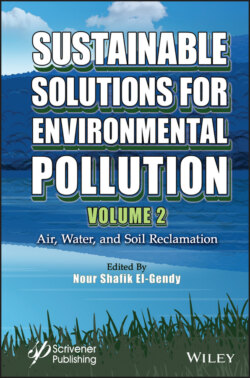Читать книгу Sustainable Solutions for Environmental Pollution, Volume 2 - Группа авторов - Страница 12
1
Natural-Based Solutions for Bioremediation in Water Environment
ОглавлениеPascal Breil1, Marie-Noëlle Pons2, Gilles Armani1, Ranya Amer3, Harrison Pienaar4, Paul Oberholster5 and Philippe Namour1*
1 INRAE, Centre Lyon Grenoble, Auvergne Rhône-Alpes, rue de la Doua, Villeurbanne, France
2 CNRS-Université de Lorraine, Laboratoire Réactions et Génie des Procédés, rue Grandville, Nancy Cedex, France
3 City of Scientific Research and Technology Applications (SRTA-City), Department of Environmental Biotechnology, New Borg El Arab, Alexandria, Egypt
4 Council for Scientific and Industrial Research (CSIR), Smart Places, Pretoria, South Africa
5 University of the Free State, Centre for Environmental Management Faculty, Natural and Agricultural Sciences, Bloemfontein, Republic of South Africa, Hebei University of Engineering, Handan, People's Republic of China
Abstract
The search for effective and sustainable techniques for the decontamination of polluted water bodies has led to significant progress over the last two decades with the emergence of the concept of bioremediation, i.e., the use of nature-based solutions (NBSs) to eliminate pollution. The sustainability of these processes is based on the availability of low-cost resources and community-wide acceptance of NBSs. The chapter begins presenting (1) the basic concepts of bioremediation in freshwater ecosystems, based on NBSs, and (2) the details about aquatic bioremediation structures used. It discusses (3) the different techniques and plants used, with published results in phycoremediation (4) and phytoremediation (5), followed by improvement of bioremediation (6), with physical-chemical and microbial activity stimulation techniques, and the development of electro- bioremediation based on a passive redox control of microorganisms. Then, it deals with the maintenance and biodiversity of constructed wetlands (CWs), (7 and 8) and the possible nuisances to be controlled. Finally, it deals with monitoring (9) and modeling of CWs (10). The chapter ends with the social acceptance of the installations in the landscape and the concepts used to integrate them at catchment scale (12). Case studies of applications in the field are used to illustrate the various points of the topic. The conclusion summarizes the important points and traces the directions for future progress. A bibliography, mostly published over the last 20 years but not exhaustive, completes the chapter.
Keywords: Self-purification, eco-hydrology, constructed wetland, phytoremediation, bank filtration
